The diversity of behavior among bird species is nowhere so dramatic as in their nest construction. Each species builds a specifically precise nest that differs in functional ways from those of almost all others. The variations are as endlessly diverse as the color patterns on a feather. Chimney swifts use their saliva to glue dry twigs onto vertical walls in a chimney cavity or hollow tree. A masked weaver bird’s nest is a finely woven bag with a long, vertical entrance tunnel that is hung from the tip of a thin branch, whereas a sociable weaver builds a communal structure that may weigh a ton. An eagle’s massive structure of branches can support a large man, while a plover merely scratches a few pebbles together on a sandbar. Owls never build anything at all but use others’ nests or nest holes. A murre lays its single egg on a sea ledge, and a fairy tern “nest” is a bare fork on a tree limb.
While some northern woodland birds build their nests on the ground, many nest in trees. One of the pleasures to be had in the winter months is seeing these nests that had been hidden by summer foliage. When leaves drop, nests are revealed; full of snow, they seem to glow against stark tree limbs. The nest owners are no longer around, making positive identification difficult, but many of these nests can be identified if you match them to geographical area, habitat, and other aspects of nest location.
Below are descriptions of some of the more common nests likely to be found and identified in the winter woods. You may not find them all in one winter, but this “field guide” should provide you with the basis for a continuing adventure.
Robin, Turdus migratorius: A robin’s nest is both universally familiar and frequently misidentified. Nests are built at any height but generally in a protected place, such as inside a barn or where a thick limb forks. The giveaway clue is a mud cup about 3 inches across that in the summer is lined with a thin layer of fine grass. The exterior of the nest is a rough jumble of twigs, leaves, and pieces of bark. Nests exposed to the weather will usually dissolve and collapse by spring; nests under cover can persist for years.
Red-eyed vireo, Vireo olivaceus: Red-eyed vireos build their nests at any height, but always in a deciduous tree. Their nests can be found in both forest and edge habitat. The nest is always a hanging cup suspended along its edges from a thin, horizontal, forked branch. It is a neat, tidy, compact structure that will have bits of birch bark, and usually also wasp paper, decorating the outside. The inside cup diameter of a vireo nest is 2 inches.
Baltimore oriole, Icterus galbula: Oriole nests are baglike nests woven out of fibers, most commonly those stripped from old, decaying milkweed plants. Nests are almost always high in deciduous trees and at the tips of branches, not in deep forest.
Chestnut-sided warbler, Dendroica pensylvanica: Chestnut-sided warblers nest in open, edge habitat and also close to the ground, in small shrubs and bushes. This nest, with its very light and flimsy appearance, is made almost entirely of very fine grasses.
Cedar waxwing, Bombycilla cedrorum: Cedar waxwings nest in small evergreens or deciduous trees in edge habitat. The nest cup is untidy on the outside like a robin’s and of similar size, but it lacks the mud cup and is typically garnished on the outside with lichens and/or moss.
American goldfinch, Carduelis tristis: American goldfinches make solid and tidy cup nests out of plant fibers and line them with thistle down. Nests are usually found out on a branch of a deciduous tree in fairly open habitat, such as a bog, edge of field, or suburban area. The nest is built with its base on the branch, not suspended like that of the vireo. Droppings are a dead giveaway (although they may be washed off by late winter), since goldfinches are the only local open-nesting songbird that allows feces to accumulate on the nest edge.
Least flycatcher, Empidonax minimus: A narrow (1.5 inches across) but deep nest cup placed into a thick, vertical fork so as to be almost hidden by it. Nests are found in deep edge habitat.
Red-winged blackbird, Agelaius phoeniceus: Red-winged blackbird nests could be confused with catbird nests, except that they’re found in relatively open marshland. Nests are often built into a tuft of grass, or in a bush, or in cattails within a foot of the ground or water. Common grackles may nest in the same sites (but also in many others). Grackle nests can be distinguished from those of red-winged blackbirds by their larger (inside diameter about 3.5 inches), more compacted nest cup.
Scarlet tanager, Piranga olivacea: Unlike the other nests in this story, scarlet tanager nests are composed almost entirely of twigs. Nests have an interior nest cup 3 inches across and feature a thin lining of rootlets. They are almost see-through in the winter. They can be distinguished from the similar-looking nest of the rose-breasted grosbeak by their location: tanagers nest high in forest trees, whereas grosbeaks tend to nest in young bushy trees. Mourning dove nests have a similarly flimsy structure but no visible cup. Most mourning dove nests are blown away before winter arrives.
Red-breasted nuthatch, Sitta canadensis: Chickadees, nuthatches, and woodpeckers nest in holes in trees, and the nests of these species can be differentiated, to some extent, by the size of the hole. A pileated woodpecker nest hole is 4 inches in diameter, a hairy woodpecker’s is 2 inches, a sapsucker’s is 1.5 inches, a chickadee’s is 1 inch (in those cases where it makes its own nest hole), and a red-breasted nuthatch’s, like the one pictured here, is also 1 inch. The holes are almost perfectly round.
Red-breasted nuthatches build substantial nests of moss, down, and fibers in their nest cavities, whereas woodpeckers never put in any nest material. When abandoned, tree-hole nests can be recycled by any of a variety of birds or by other tenants. Note the diagnostic globs of pitch brought to the nest to plaster at and below the entrance to the hole; this pitch probably functions to restrict predator access. The tree in this photograph is a dead red maple.
Winter wren, Troglodytes troglodytes: All wren nests are domed, with a small entrance hole at the side. Those of the winter wren are most commonly garnished on the outside with green moss and small spruce or fir twigs. Although the wrens may place their nest under a stream bank, in hanging moss close to the ground, or in a small, densely branched tree, they are most commonly found in root tip-ups of wind-blown trees.
Ruby-throated hummingbird, Archilochus colubris: Ruby-throated hummingbirds garnish their walnut-sized nests with lichens to “mimic” bumps on limbs. Nests are lined with soft white plant down. The only nest that is similar in habitat, placement, and appearance, though it is substantially larger, is that of the wood peewee.


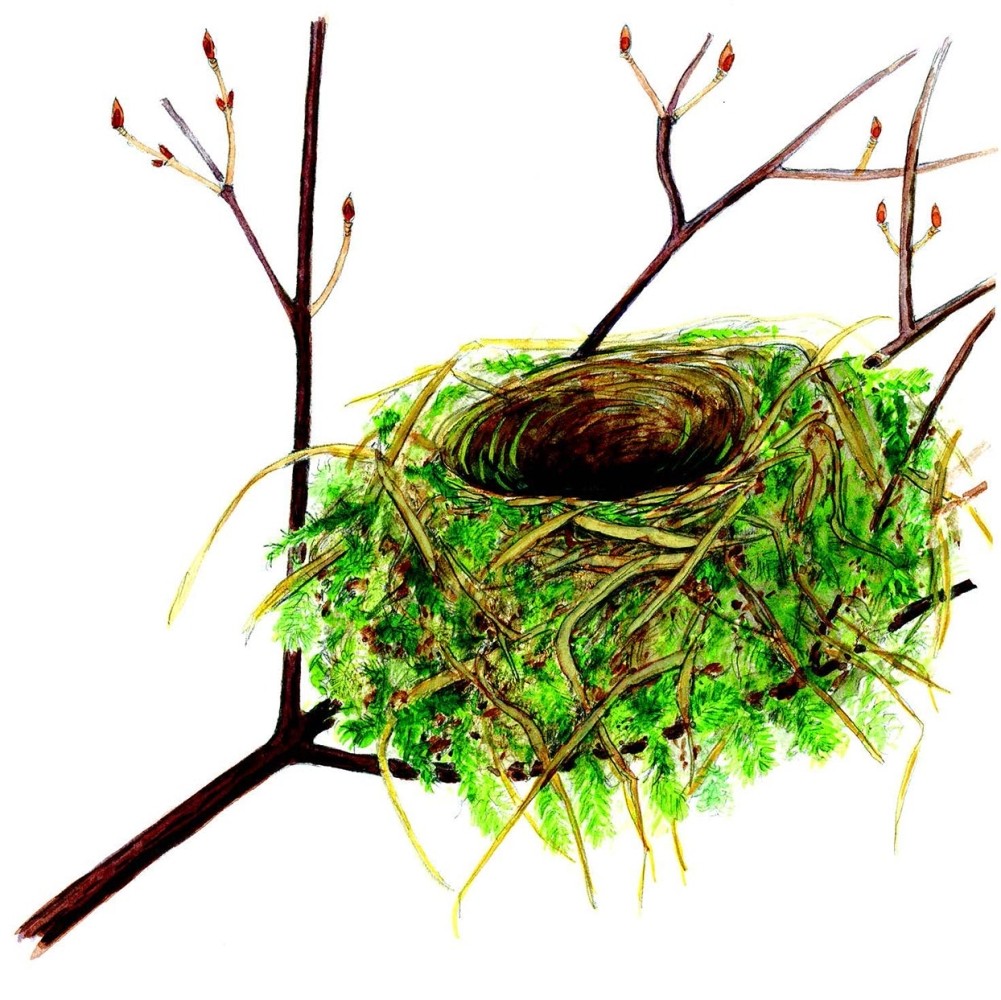
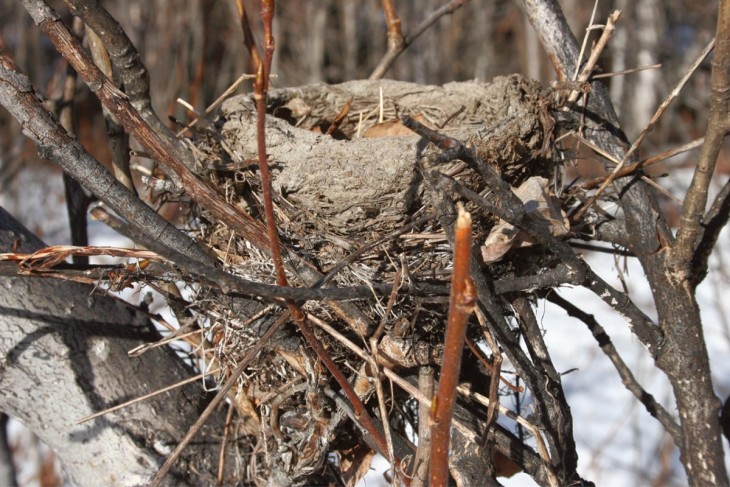
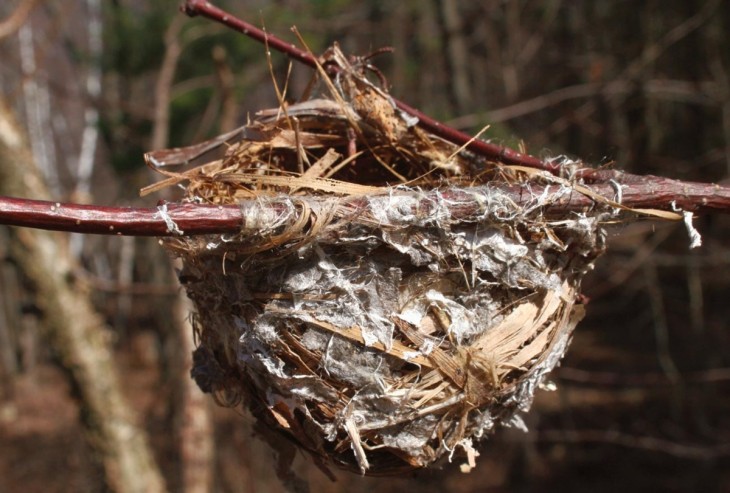
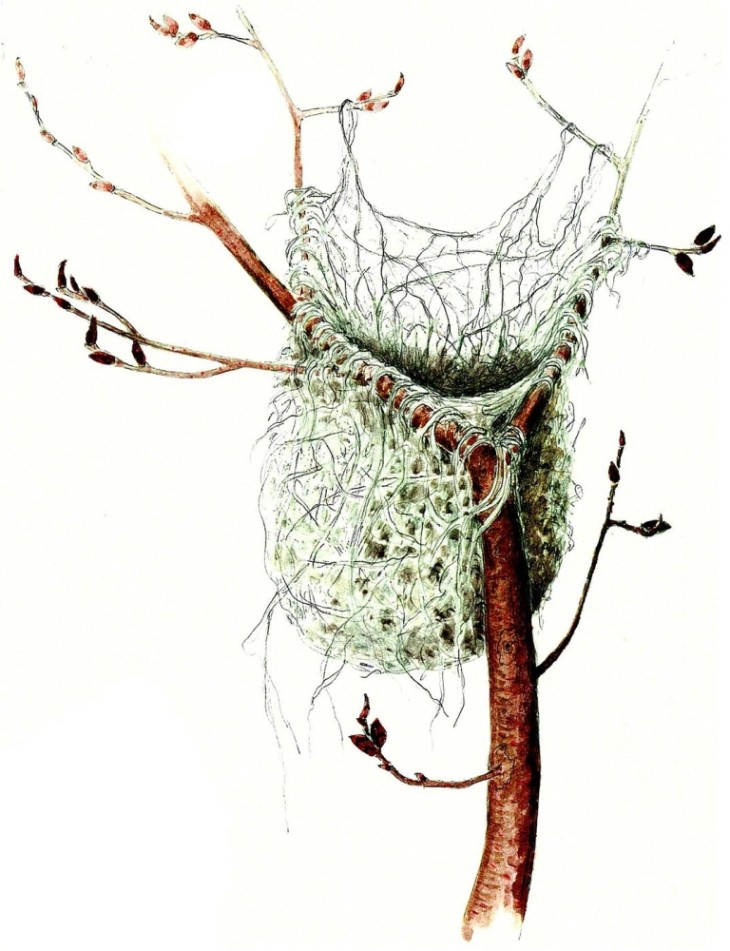
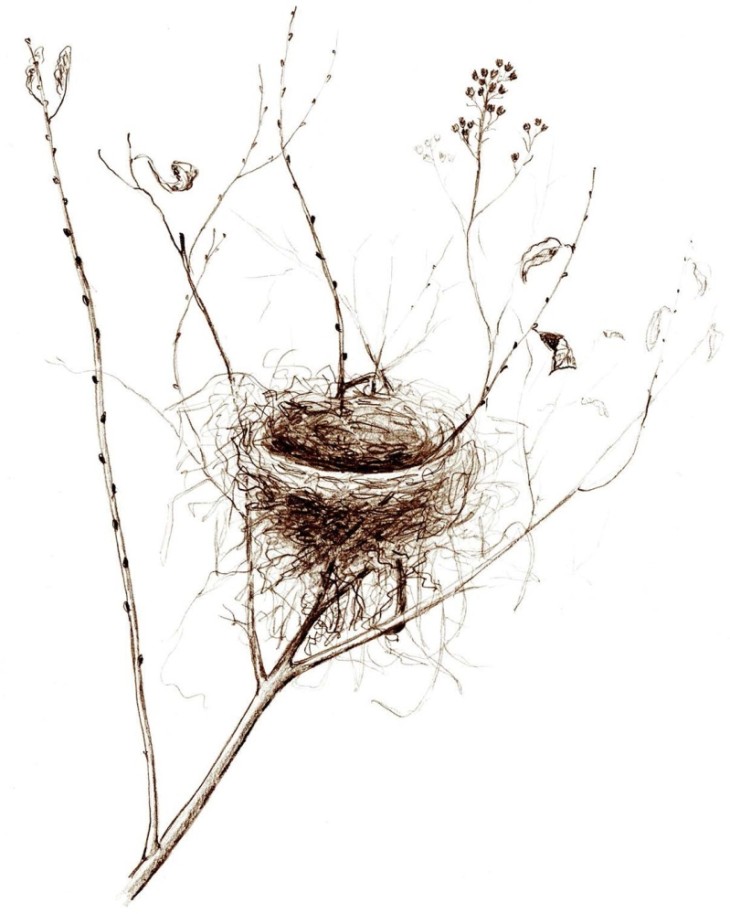
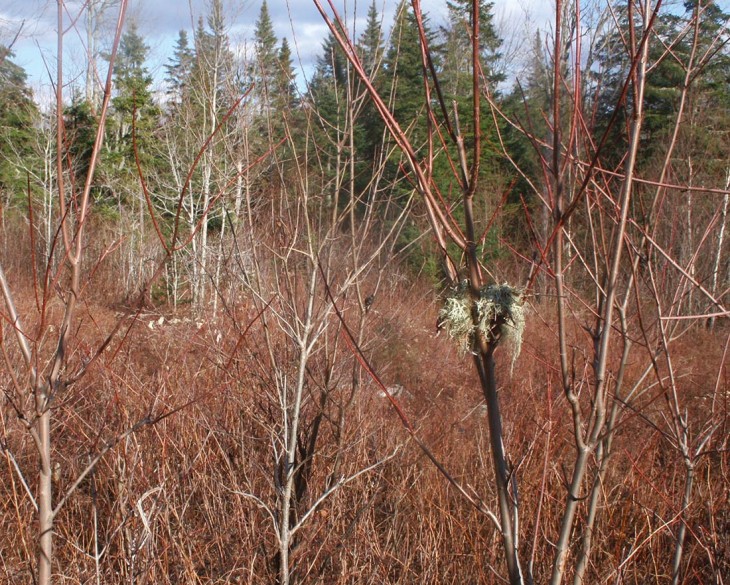
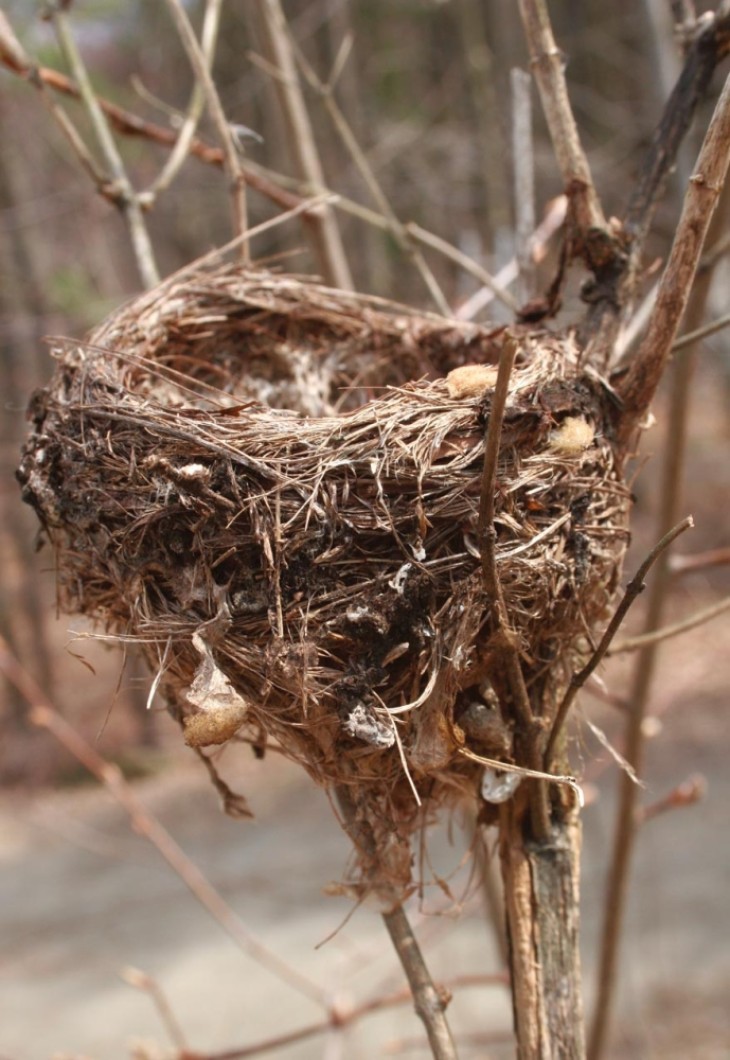
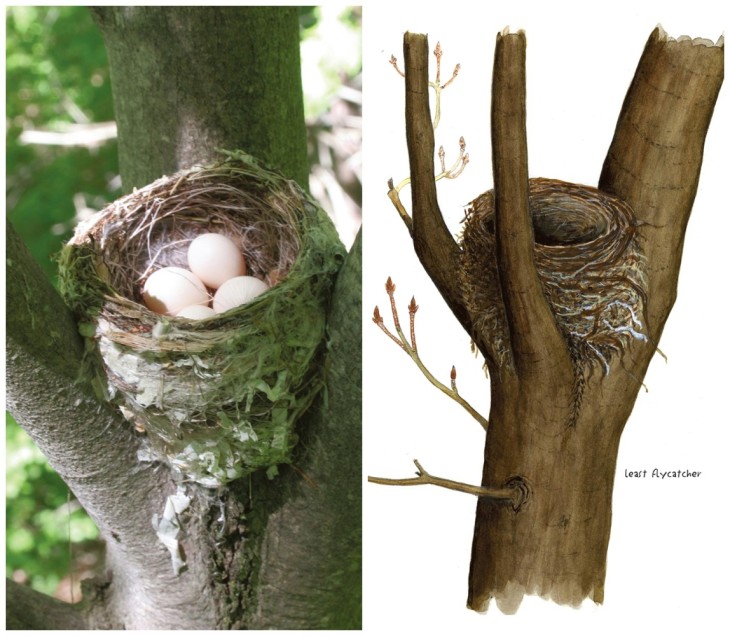
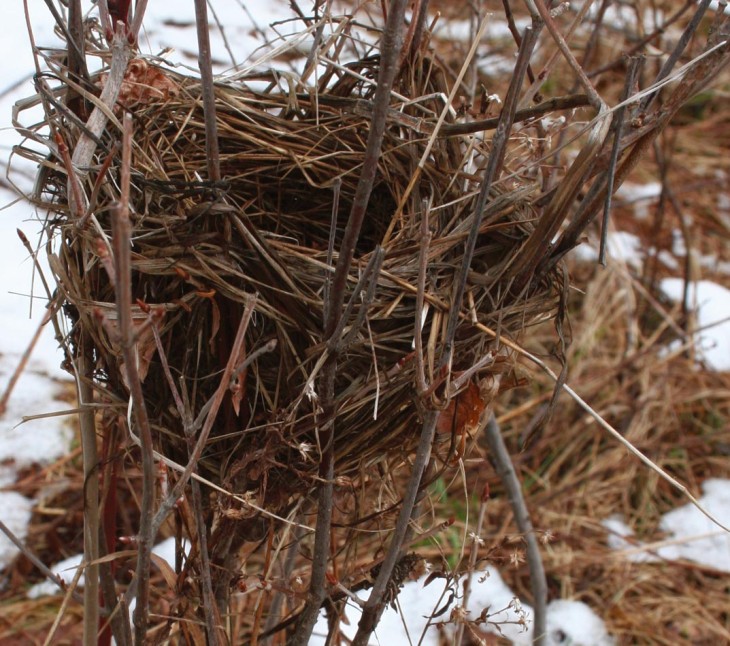
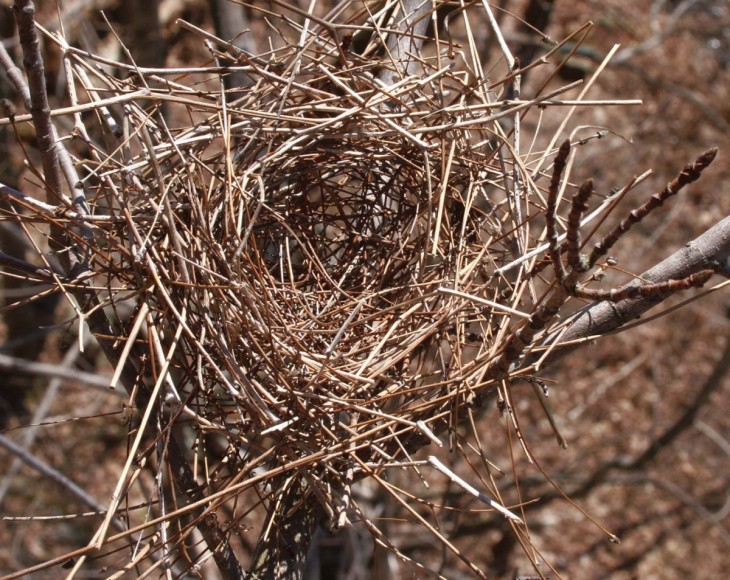
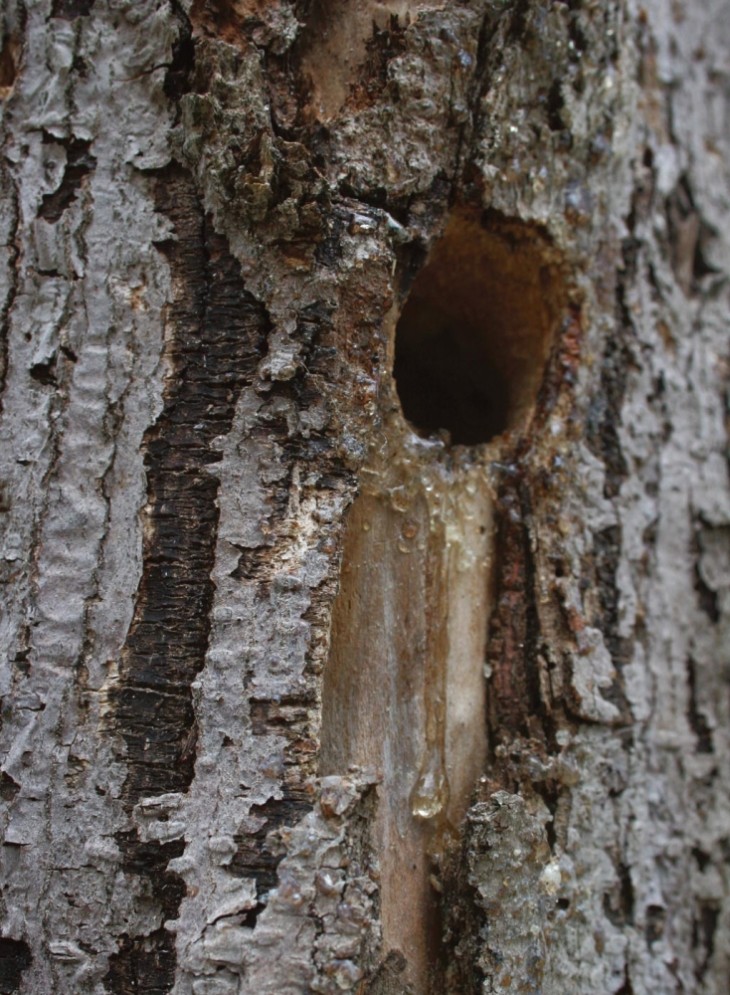













Discussion *